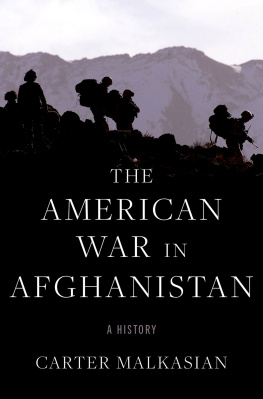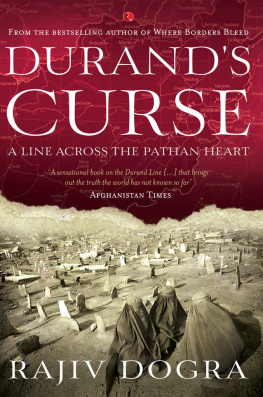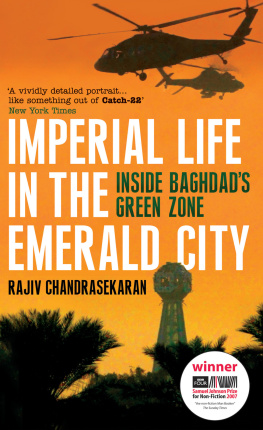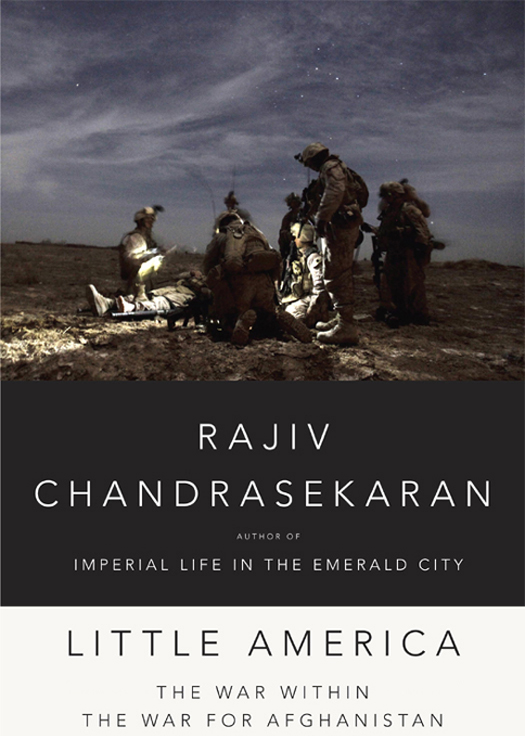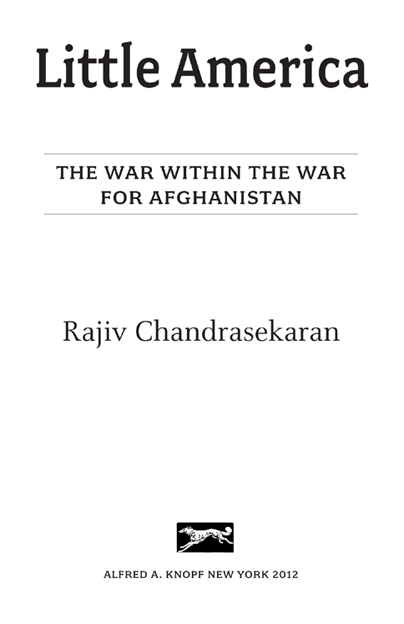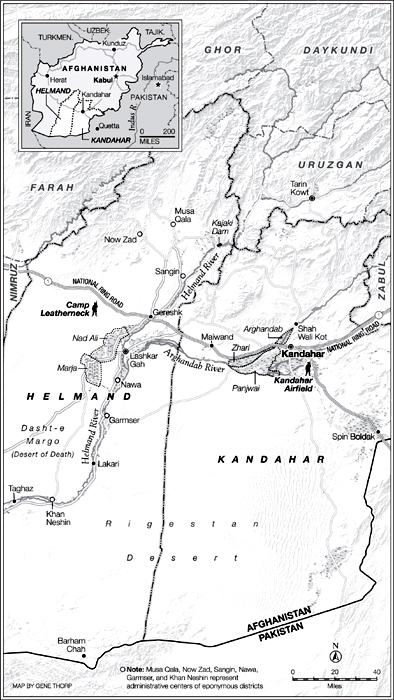Rajiv Chandrasekaran - Little America: The War Within the War for Afghanistan
Here you can read online Rajiv Chandrasekaran - Little America: The War Within the War for Afghanistan full text of the book (entire story) in english for free. Download pdf and epub, get meaning, cover and reviews about this ebook. year: 2012, publisher: Knopf, genre: History. Description of the work, (preface) as well as reviews are available. Best literature library LitArk.com created for fans of good reading and offers a wide selection of genres:
Romance novel
Science fiction
Adventure
Detective
Science
History
Home and family
Prose
Art
Politics
Computer
Non-fiction
Religion
Business
Children
Humor
Choose a favorite category and find really read worthwhile books. Enjoy immersion in the world of imagination, feel the emotions of the characters or learn something new for yourself, make an fascinating discovery.

- Book:Little America: The War Within the War for Afghanistan
- Author:
- Publisher:Knopf
- Genre:
- Year:2012
- Rating:5 / 5
- Favourites:Add to favourites
- Your mark:
Little America: The War Within the War for Afghanistan: summary, description and annotation
We offer to read an annotation, description, summary or preface (depends on what the author of the book "Little America: The War Within the War for Afghanistan" wrote himself). If you haven't found the necessary information about the book — write in the comments, we will try to find it.
When President Barack Obama ordered the surge of troops and aid to Afghanistan, Washington Post correspondent Rajiv Chandrasekaran followed. He found the effort sabotaged not only by Afghan and Pakistani malfeasance but by infighting and incompetence within the American government: a war cabinet arrested by vicious bickering among top national security aides; diplomats and aid workers who failed to deliver on their grand promises; generals who dispatched troops to the wrong places; and headstrong military leaders who sought a far more expansive campaign than the White House wanted. Through their bungling and quarreling, they wound up squandering the first year of the surge.
Chandrasekaran explains how the United States has never understood Afghanistanand probably never will. During the Cold War, American engineers undertook a massive development project across southern Afghanistan in an attempt to woo the country from Soviet influence. They built dams and irrigation canals, and they established a comfortable residential community known as Little America, with a Western-style school, a coed community pool, and a plush clubhouseall of which embodied American and Afghan hopes for a bright future and a close relationship. But in the late 1970safter growing Afghan resistance and a Communist coupthe Americans abandoned the region to warlords and poppy farmers.
In one revelatory scene after another, Chandrasekaran follows American efforts to reclaim the very same territory from the Taliban. Along the way, we meet an Army general whose experience as the top military officer in charge of Iraqs Green Zone couldnt prepare him for the bureaucratic knots of Afghanistan, a Marine commander whose desire to charge into remote hamlets conflicted with civilian priorities, and a war-seasoned diplomat frustrated in his push for a scaled-down but long-term American commitment. Their struggles show how Obamas hope of a good war, and the Pentagons desire for a resounding victory, shriveled on the arid plains of southern Afghanistan.
Meticulously reported, hugely revealing, Little America is an unprecedented examination of a failing warand an eye-opening look at the complex relationship between America and Afghanistan.
Rajiv Chandrasekaran: author's other books
Who wrote Little America: The War Within the War for Afghanistan? Find out the surname, the name of the author of the book and a list of all author's works by series.


